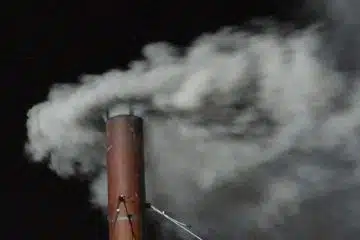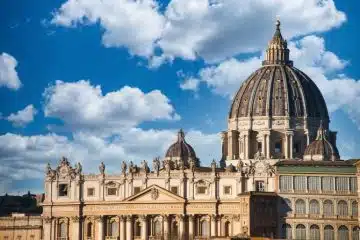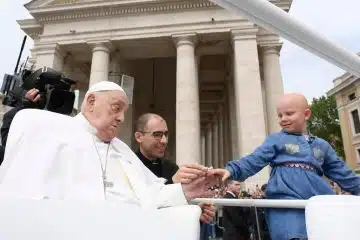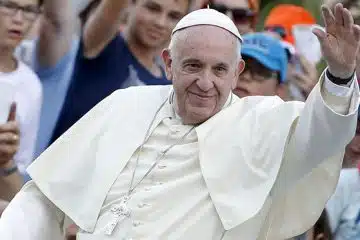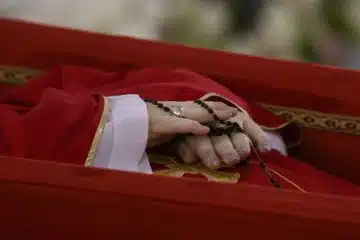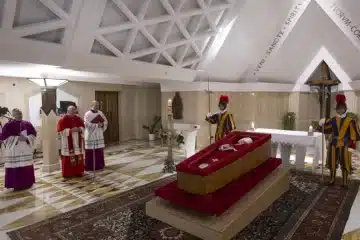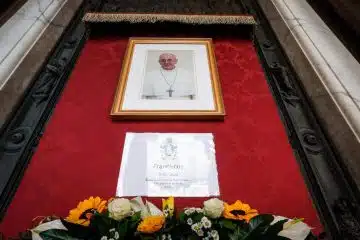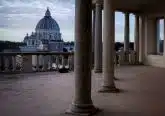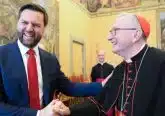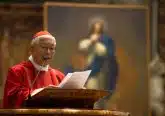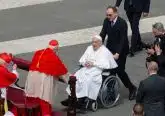US, Holy See cooperation often guided by pope’s vision of just world
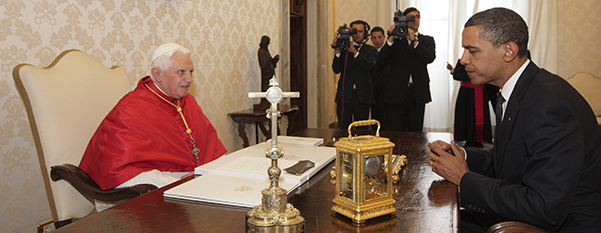
By Dennis Sadowski Catholic News Service
WASHINGTON (CNS) — During Pope Benedict XVI‘s visit to the White House in 2008, his thoughts turned to the First Amendment and its enshrinement of the free practice of religion.
He told President George W. Bush that the idea of religious freedom as expressed in the First Amendment illustrates the country’s commitment to respecting diversity. Religious values helped forge “the soul of the nation” and should continue to inspire Americans as they face complex political and ethical issues, the pope said.
The exchange was brief, certainly not scripted, recalled Francis Rooney, former U.S. ambassador to the Holy See, who participated in the welcoming ceremony on the White House lawn on a sunny spring morning.
“How incredible is that to have the pope standing on the White House lawn quoting the First Amendment?” Rooney observed.
That story, as recalled to Catholic News Service Feb. 21, illustrates how Pope Benedict holds the United States in high regard.
While the Holy See during Pope Benedict’s eight years of service and the U.S. did not always agree on every policy matter (such as abortion, peace in the Holy Land or the Iraq War), both recognized the importance of addressing common concerns to bring about a more just world.
Since 2009 under Pope Benedict, the U.S. was a leading participant in Vatican-sponsored programs and initiatives on human trafficking, migration and protecting the environment.
President Barack Obama posed more of a challenge to the Holy See than that of Bush, which encompassed church teaching on high-profile issues such as abortion, stem-cell research and same-sex marriage. But Pope Benedict made sure that the U.S. was included in matters of social justice because of its leadership position on the world stage.
“The Holy See is always going to want to have strong relations with the U.S.,” Rooney said. “We’re one of the strongest and most Catholic countries on earth.”
That strong relationship was forged beginning in 1984 after President Ronald Reagan initiated full diplomatic relations with the Holy See and named William Wilson ambassador. Since then, U.S.-Holy See diplomacy has been warm and highly collaborative on issues that promote the social well-being of people worldwide. Any disagreements, even on high-profile topics, have been downplayed.
Thomas P. Melady, who was U.S. ambassador to the Holy See from 1989 to 1993, said that the concerns for justice have remained the same under Blessed John Paul II and Pope Benedict. The difference the past eight years, Melady noted, is that Pope Benedict has followed more traditional diplomatic channels to get his message across.
So as Obama, whose support for keeping abortion legal and using embryonic stem cells in research conflicted with church teaching, was inaugurated the first time in 2009, Pope Benedict sent a telegram congratulating the new president. The pope supported Obama’s resolve to “promote understanding, cooperation and peace among the nations.”
It was an indication that the Holy See was willing to cooperate with the new administration whenever it could.
Six months later, Pope Benedict and Obama met privately at the Vatican. It was the chance for the pope to express the church’s position on bioethical issues without risking a public confrontation.
At the time Benedict’s gifts to Obama included a copy of his encyclical “Caritas in Veritate” (“Charity in Truth”) and a copy of the Vatican document on biomedical ethics, “Dignitas Personae” (“The Dignity of a Person”).
Obama graciously accepted the gifts, promising to read the documents on the next leg of his journey to western Africa to better understand Catholic teaching.
Miguel H. Diaz, who stepped down as U.S. ambassador to the Holy See in November to become professor of faith and culture at the University of Dayton in Ohio, told CNS that Pope Benedict’s vision for a just world that were expressed in encyclicals and other writings often paralleled the Obama administration’s diplomatic goals.
In areas such as economic development to ease poverty and religious freedom around the world, the U.S. and the Holy See found common ground. Diaz said he saw the importance of collaborating with Vatican offices as vital to building bridges across cultures and religions.
“We were very mindful of the fact that as a result of the vast network the church as all over the work that includes hospitals, educational institutions, humanitarian agents, it was important tapping those resources to multiply our positive results,” Diaz said.
Rooney recalled that soon after he became ambassador in 2005, the pope regularly addressed the rising threat of Muslim extremism in private meetings. Before long, the private concerns became known in public pronouncements.
“What he said is we’re aligned in this common pursuit to deal with the threat of radical Islam and the use of religion to make war and commit crimes. … The whole concept he articulated was of the inappropriateness of using religion as an excuse for criminality,” Rooney explained.
“It was a great thing that this pope, when he came into office, was able to stand up so clearly and explain the threat he felt before the world,” Rooney added. “That was a huge thing. That had huge resonance with the (Bush) administration’s prosecution of the global war on terror.”
Most importantly though, Diaz said, was that the position of U.S. ambassador was to build trust and serve as a “listening post” to hear what others are saying so that appropriate actions can be taken and little comes as a surprise.
“We had a network of people who came my way to talk and I listened to convey their ideas to Washington,” he said.


